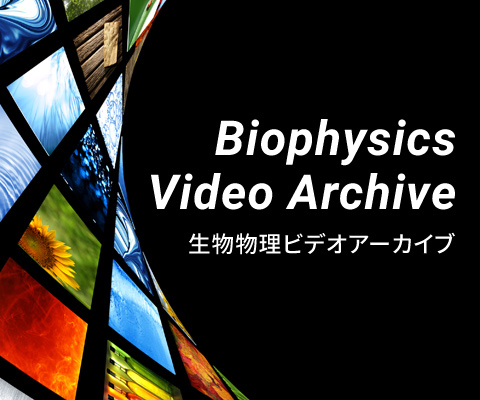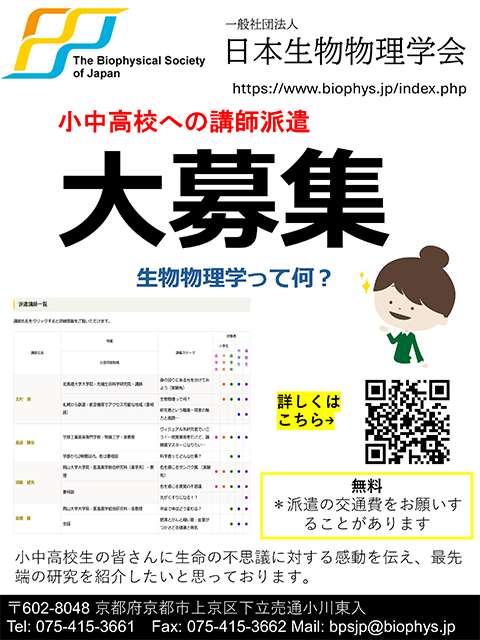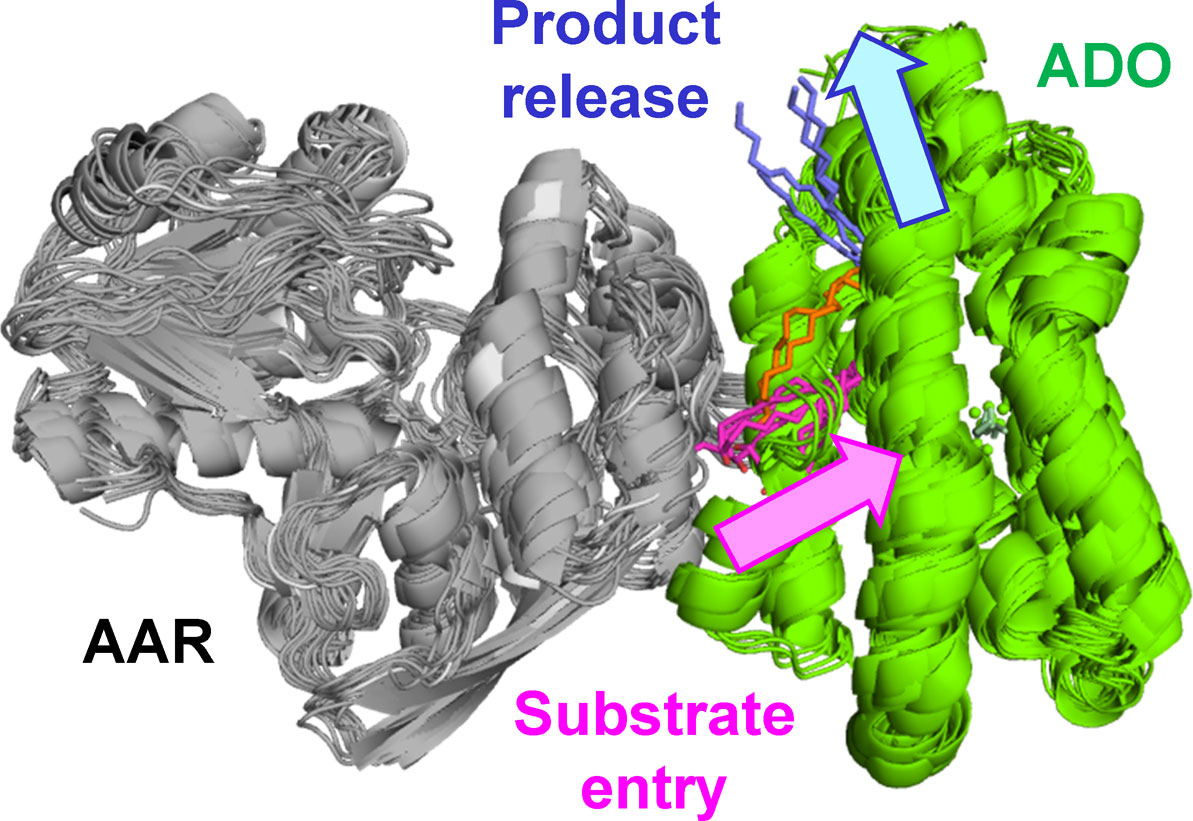男女共同参画学協会連絡会
支援企業による広告記事
- ソーラボジャパン株式会社
- CAD を使って光学装置を設計してみよう
- 「生物物理」2025年10月号
- ソーラボジャパン株式会社
- 次世代2光子顕微鏡―小型化がもたらす新たな可能性
- 「生物物理」2024年10月号
- ソーラボジャパン株式会社
- サイエンティフィックカメラと周辺機器の同期
- 「生物物理」2023年10月号
- ソーラボジャパン株式会社
- 顕微鏡のリノベーション ~ 顕微鏡ポートを活用した光学系の導入
- 「生物物理」2022年12月号
「Biophysics and Physicobiology」に Masataka Yoshimura, Munehito Arai による "Product release and substrate entry of aldehyde deformylating oxygenase revealed by molecular dynamics simulations" をJ-STAGEの早期公開版として掲載
2025年01月09日 学会誌
日本生物物理学会欧文誌[Biophysics and Physicobiology]に以下の論文が早期公開されました。
Masataka Yoshimura, Munehito Arai
"Product release and substrate entry of aldehyde deformylating oxygenase revealed by molecular dynamics simulations"
URL:https://doi.org/10.2142/biophysico.bppb-v22.0003
- Abstract
- Cyanobacteria can produce alkanes equivalent to diesel fuels through a two-step enzymatic process involving acyl-(acyl carrier protein) reductase (AAR) and aldehyde deformylating oxygenase (ADO), providing a potential renewable biofuel source. AAR binds to ADO for efficient delivery of an aldehyde substrate and they have been proposed to dissociate when the alkane product is released from the same site as the substrate entrance of ADO. However, the dynamics of the substrate and product in ADO during substrate entry and product release are poorly understood. Here, we performed molecular dynamics (MD) simulations of ADO in the presence of substrate or product. We found that while the aldehyde substrate remains close to the active center of ADO before catalysis, the alkane product can dynamically rotate within the hydrophobic tunnel inside ADO toward the product exit after catalysis. Furthermore, the parallel cascade selection (PaCS)-MD simulations of ADO and the AAR/ADO complex identified the locations of the substrate entrance and the multiple exits for product release on ADO. Strikingly, the PaCS-MD simulations revealed that the alkane product can be released from the exit different from the substrate entrance without dissociation of AAR. Based on these results, we propose a reaction model for efficient alkane production by the AAR/ADO complex in which aldehydes and alkanes are synthesized simultaneously while AAR and ADO remain bound, and the aldehyde substrate can be delivered to ADO immediately after alkane release. Our study will be useful in improving the efficiency of bioalkane production using AAR and ADO.
URL: https://doi.org/10.2142/biophysico.bppb-v22.0003







